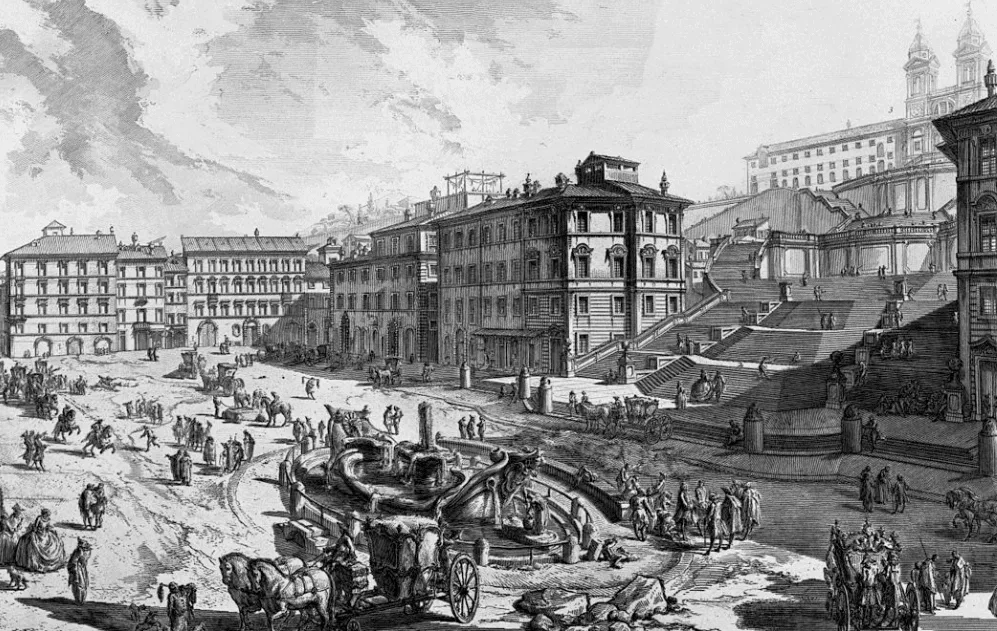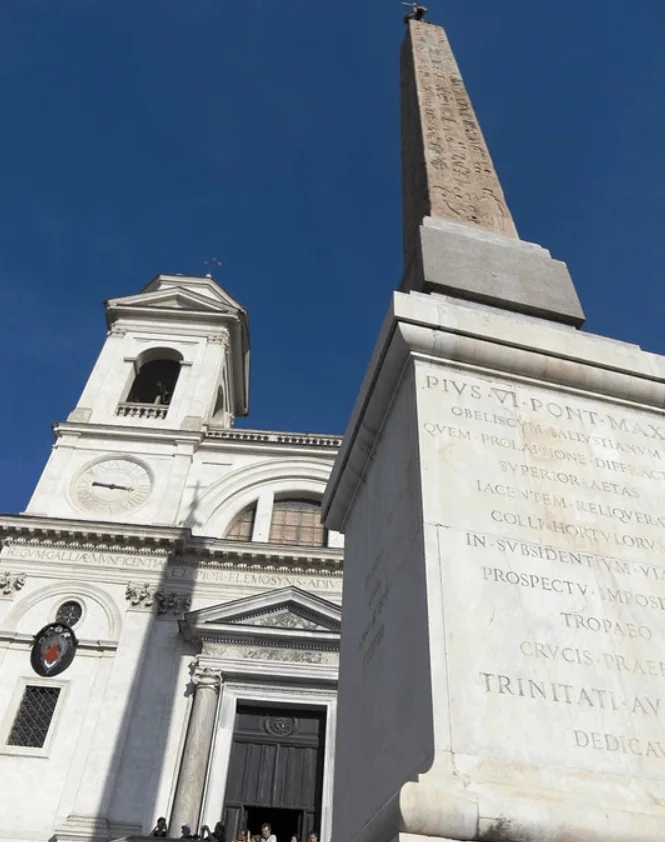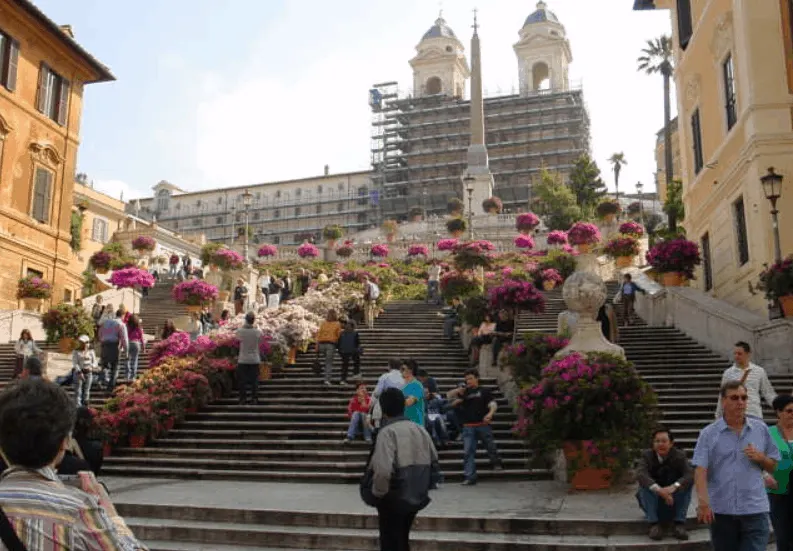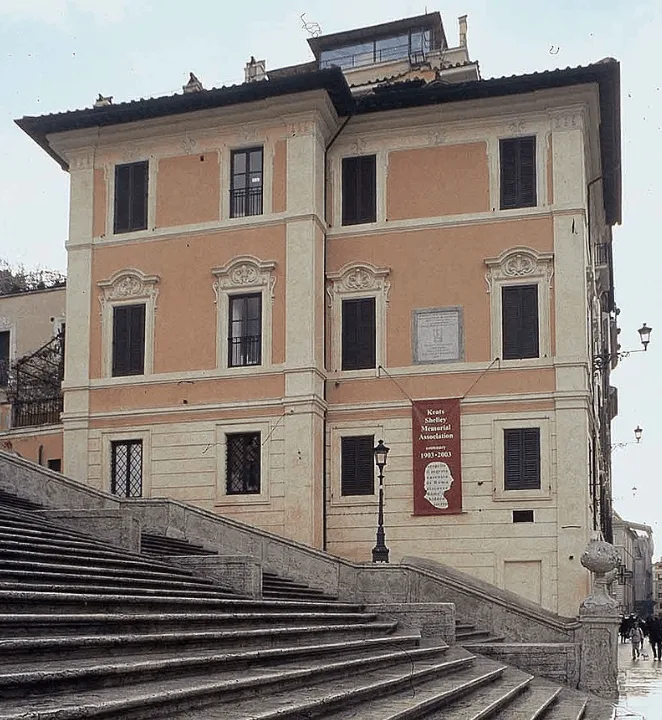Rome is home to one of the most famous stairways in the world.
We all know that Rome is filled with history. The ancient Romans left behind monuments such as the Colosseum and the Forum Romanum.
More recent attractions include the Trevi Fountain and the famous art collection of the Vatican Museum.
In this post, we’ll provide you with the ultimate list of facts about the Spanish Steps, the most amazing way to climb a steep slope in the city of Rome.
1. What are the Spanish Steps?
If you find yourself standing on the Piazza Di Spagna, you will see a church called the “Trinità dei Monti church on top of a hill.
To reach the church, you will be required to climb a total of 135 steps. This stairway is referred to as “The Spanish Steps.”
The Spanish steps are a monumental stairway connecting the Piazza di Spagna with the Piazza Trinità dei Monti on top of a steep hill.

2. Why are they called the Spanish Steps?
According to the name, one would assume the Spanish had something to do with them, right?
Well, not directly.
The name simply refers to the Piazza di Spagna, located at the bottom of the Spanish steps.

3. What is the Piazza di Spagna?
The Piazza di Spagna is one of the most famous squares in all of Rome. It gets its name from the “Palazzo di Spagna,” which is located on the square.
The Palazzo di Spagna is a baroque-style palace, also simply referred to as “The Spanish palace,” that houses the Embassy of Spain to the Holy See (the jurisdiction of the Bishop of Rome) since the year 1647.
It doesn’t house the embassy of Spain in Italy though as this one is located on the first floor of the Borghese Palace of Rome.

4. Who built the Spanish Steps?
The church on top of the hill, the Trinità dei Monti Church, was completed in 1585. By then, a wooden staircase was built to reach it.
This can still be seen in a painting by the Dutch painter Caspar van Wittel from 1683, depicting a wooded slope.
It wasn’t until the year 1717 that Pope Clement XI decided to hold a design contest to create the structure.
Eventually, it was the little-known Italian architect Francesco de Sanctis who submitted the winning entry and built the Spanish Steps in collaboration with colleague Alessandro Specchi.

5. What’s the current condition of the Spanish Steps?
The Spanish Steps had been deteriorating for years. One renovation took place in 1995 which gave the Spanish Steps a much-needed makeover.
The major renovation, which costs about 1.5 Million Euros ($1.7 million), took place in 2015. This makeover returned the marble steps to their original glory.
The renovations lasted almost a year and were reopened in a major opening ceremony on September 21, 2016.

More interesting facts about the Spanish Steps
6. There are in fact only 135 steps and not 136 or 137. The drainage system is a little elevated and is sometimes misinterpreted as the first step.

7. The Trinità dei Monti church which is located on top of the hill the Spanish Steps lead to, is actually the property of the State of France. Better yet, the entire surrounding area of French State property. This includes the Villa Medici which houses the French Academy in Rome.
8. The Spanish Steps were actually financed by a French diplomat named Étienne Gueffier. He left a total amount of 20,000 Scudi, a currency used in Italy until the 19th century, with the sole purpose of financing a reinforced stairway leading to the Trinità dei Monti church. Would the Frenchmen have done this if he knew the stairs would be called “The Spanish Steps?” We seriously doubt it.
9. On the Piazza di Spagna there is a fountain called the “Fontana Della Barcaccia” that was created by Pietro Bernini, the father of the “founder of baroque,” Gian Lorenzo Bernini. Drawings made by Gian Lorenzo Bernini have been the inspiration for the famous Trevi Fountain in Rome. The fountain was created between 1627 and 1629, nearly 100 years before the steps were built.

10. The translation of the name of the fountain, “Fontana Della Barcaccia,” is “Fountain of the old boat.” It’s based on a popular legend. According to the legend, a flood of the Tiber river in the 16th century brought a sunken boat all the way to the location of the fountain.
11. On top of the Spanish Steps, there is an obelisk called the “Sallustiano.” This is a smaller copy of another obelisk found in Rome, the Flaminio of Ramses II located on the Piazzo del Popolo. The one on top of the Spanish Steps is an Aurelian copy, the one found on the Piazzo del Popolo is an authentic Egyptian obelisk (as there are quite a few in Rome).

12. Reaching the church at the top is not the sole purpose of the Spanish Steps. From there you can also go further up the “Pincio,” which refers to the Pincian Hill. You can also reach the Villa Medici which is included in the French State property.
13. The Pincian Hill, even though located in the historical center of Rome, was located outside of the boundaries of ancient Rome. This means it wasn’t one of the seven hills on which the ancient city of Rome was built.
14. The best time of the year to visit the Spanish Steps is definitely during Springtime. At least, the start of it as Spanish Steps are then decorated with blossoming azaleas to mark the start of the season.

15. Just next to the Spanish Steps you can find the Keats–Shelley Memorial House, a museum commemorating two of the most famous romantic artists. Percy Shelley was the husband of Mary Shelley who wrote the world-famous book “Frankenstein; or, The Modern Prometheus.” It is commonly believed Percy had a big stake in the novel that just about anybody in the world knows of now.
16. John Keats used to live in Rome just before he died at the young age of 25 of tuberculosis. He was urged to come to Rome in November 1820, believing the warm climate would help with his disease. He died the following year on February 23.

17. The first Mcdonald’s restaurant in Italy opened its doors in the middle of the Piazza di Spagna, much to the dislike of the Italians. The first to complain was the neighboring fashion store “Valentino.” According to his legal proceedings, he blamed McDonald’s for spreading ”significant and constant noise and an unbearable smell of fried food fouling the air.” But he wasn’t alone, thousands of protestors gathered on the Piazza di Spagna to protest against a burger store entering the land of spaghetti.
18. The protest didn’t stop there. It actually turned into a full-blown movement perfectly called the “slow food movement.” The organization now counts over 100,000 members and promotes alternatives to fast food, mainly focusing on local food and traditional cooking, all over the world. This all started in front of the Spanish Steps.
19. With all this talk about food, you would start to get hungry. Well, if you’re in the vicinity of the Spanish Steps, make sure not to eat when you’re actually on them. After the expensive renovations, the Italian authorities will do whatever they can to keep the Spanish Steps in pristine conditions. This includes enforcing a total ban on food on the Spanish Steps.
20. The Spanish Steps became famous all around the world when they hit the big screen in the 1953 movie “Roman Holiday,” starring Gregory Peck and Audrey Hepburn. Watch a clip from the movie filmed on the Spanish Steps below:
21. Another famous film that featured the Spanish Steps extensively is the 1999 movie called “The Talented Mr. Ripley” starring Matt Damon, Jude Law, and Gwyneth Paltrow.
22. In 2007, a young man was driving his car near the Trinita dei Monti church. He mistakenly took the Spanish Steps for a road and accidentally drove his car down, damaging multiple steps on his way down the 18th-century monument. He was a little drunk and forgot to say “I didn’t know I couldn’t do that.” So he was instantly arrested before even reaching the Piazza di Spagna.


Leave a comment
You must be logged in to post a comment.